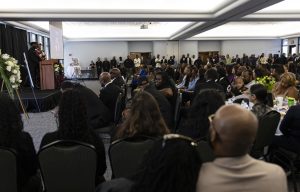COLUMN: Transfers good investment
February 23, 2005
I’ll be honest; I had my doubts.
Going to a Yuba College-Cosumnes River College basketball game wasn’t exactly my idea of a fun Friday night out, no matter how much a friend of mine insisted it would be.
Boy was I an idiot.
It took Yuba’s 6-foot-10 power forward Zach Andrews one 10-second sequence to turn my opinion.
Following a block on the defensive end Andrews ran point down the floor, ball faked, passed it off and caught an alley-oop throwing it down reverse style.
The play was Sportscenter’s top play for that night.
After I picked my jaw up off the floor, I realized, “Damn, these guys are good.”
At that point I realized why all these junior colleges were popping up on rosters throughout the Sacramento State athletic program. A handful of JC athletes are just as good as their Division I counterparts that made the big jump right away.
About 17 percent of the student-athletes in the program transferred from a junior college, but team-to-team the trends are undeniable.
Men’s and women’s basketball combine for 11 junior college transfers out of 18 total players, seven of which play on the women’s team.
One fifth of the football roster consists of JC transfers as well.
By contrast, the volleyball, men’s and women’s tennis and gymnastics teams have none between them.
“There was need in our program to fill a multitude of areas,” said second-year women’s basketball coach Dan Muscatell. “We needed that help right away.”
The reasoning?
The basketball and football teams are the ones that have the most to build. Volleyball, tennis and gymnastics on the other hand have been the most successful teams in recent memory.
It’s working. The women’s basketball team is having its best season in six years and the men have steadily improved their conference ranking in head coach Jerome Jenkins’ tenure.
“Junior Colleges get a bad rep because of a lack of information,” Sac State assistant men’s basketball coach Dwayne Canada, a former JC player and coach said. “Junior College is a chance to open up opportunities.”
Canada served as a top assistant at Wayne County Junior College in Detroit and coached current Hornet Aaron Perry as well as former Sac State point guard James Payne. He was a former junior college player himself and told stories of high school athletes coming into Wayne County’s gym and scoffing at the competition.
“Sometimes kids coming out of high school put themselves on such a pedestal,” Canada said. “They think they’re too good for junior college ball.”
Jason Harris, the men’s basketball team’s leading scorer once too laughed at the idea of junior college ball rather than taking a scholarship. Rather than play at Chaffey JC right around the corner from his high school, he took a Division II scholarship at Cal State Dominguez Hills.
“Toward the end of my senior year athletes were sporting hats with the college they were going to,” Harris said. “I didn’t want to show up with a Chaffey hat because I didn’t want to get clowned.”
Nowadays Harris does his clowning on opposing guards while sporting Hornets green and gold. He leads the men’s basketball team averaging 17 points and is second in rebounds per game snatching 4.6 per game.
Harris is the perfect example of an athlete unready for Division I ball right out of high school, but with the physical talents to one day get there and by virtue of tearing up junior college ball increased his value. A late bloomer.
Harris is just the beginning when you talk about former junior college athletes doing big things at Sac State.
On the women’s side, Tyeisha Brown and Ashley Cadotte are two athletes that took scholarships out of high school; Brown to Division I Cal State Northridge and Cadotte to Division II Seattle Pacific.
Cadotte, the team’s leader in rebounds averaging 6.8 boards per game said the confidence she gained in playing for Clackamas Community College in her hometown of Oregon City, Ore., helped mold her.
“In junior college you get a lot of valuable playing time you wouldn’t ordinarily have,” Cadotte said.
“A lot of people have a negative perception of junior colleges,” Brown said. “It’s not something to be made fun of.”
Another reason teams target junior college athletes are the differences in the game from the high school to college level. In softball for instance, the pitching circle is three feet further from the plate in college.
“If you get a freshman coming in they have to make that adjustment and it takes time,” Sac State assistant softball coach Amanda Garceau, a former Sac City and Tennessee softball star, said. “If we get someone to come in from a junior college they’ve already made that adjustment and can help us right away.”
One pitcher helping them right away is Elk Grove product Nikki Cinque who starred locally at Sheldon High and Sac City before coming to Sac State. Cinque could have taken scholarships right out high school but instead chose to play for coach Robert Maglione at Sac City.
“There are so many great JCs out there,” Cinque said. “Although it might be hard on their ego high school athletes should look at JCs as a real possibility.”
“I’m proud of the fact that I went to junior college. It’s the best decision I ever made.”
John Parker can be reached at [email protected]
























































































































